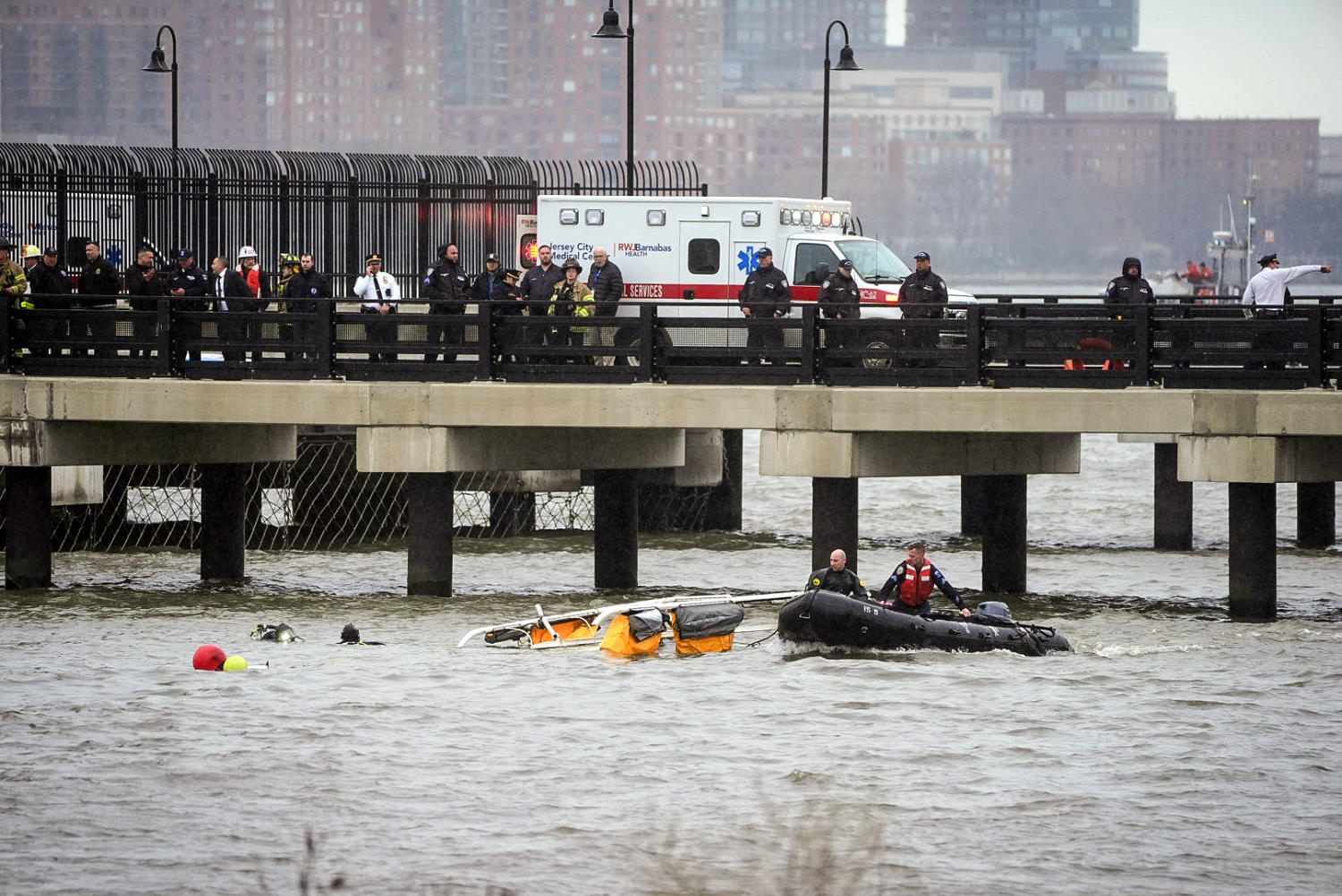Share this @internewscast.com

The pilot of the tourist helicopter that crashed into the Hudson River on Thursday afternoon could not have done anything to save himself or his five passengers after the aircraft’s rotor blades and its tail boom detached in the air, an aviation expert said Friday.
“Everything we train for as helicopter pilots is under the assumption that the rotor system is still attached to the aircraft,” said Brandt Anderson, a former U.S. Army combat helicopter pilot who is now a policy adviser. “Once that’s separated, there’s no wings, there’s no ability to glide — it’s just falling out of the sky at that point.”
“It’s absolutely horrible,” he added.
An official from the National Transportation Safety Board (NTSB) said at a news conference Friday that she would not speculate as to a preliminary cause when asked whether the agency had identified one, emphasizing instead that investigators were still searching for components of and structures from the aircraft, interviewing witnesses and obtaining records, including of the operator of the helicopter, New York Helicopters, and its owner.
“We don’t rule anything out,” said Jennifer Homendy, the chair of the NTSB. “We take a very detailed and comprehensive view and it’s way too early in the investigation.”
The Bell 206 sightseeing helicopter departed a downtown Manhattan heliport at 2:59 p.m. and the ride lasted less than 20 minutes. Eyewitness video showed the rotors and the fuselage separating in midair before the helicopter plummeted from the sky, crashing upside-down into the Hudson River near Jersey City, New Jersey.
The crash killed Agustín Escobar, the chief executive for rail infrastructure for the German technology company Siemens, his wife, Merce Camprubi Montal, and their three children, as well as the pilot, Sean Johnson.
Divers were still searching for the helicopter’s main rotor, main transmission and its roof and tail structures on Friday, Homendy said.
Robert Joslin, a professor at Embry-Riddle Aeronautical University in Daytona, Florida, said that when investigators examine the wreckage, they will look at whether there were any structural or impact failures that made the tail rotor come off.
“Once the tail rotor comes off, I mean, this isn’t speculation, it’s just like a seesaw,” he said. “Once that tail boom was separated from the rest of the helicopter, then you could see it tumbling.”
Joslin previously served as the Federal Aviation Administration’s chief scientific and technical advisor for flight deck technology and was a flight test pilot with the agency. He was also a colonel in the U.S. Marine Corps and a military test pilot.
He said investigators will also probe the aircraft’s maintenance records to see whether there were any issues in its history.
Anderson, the former U.S. Army combat helicopter pilot, and John Cox, a pilot and the president and CEO of Safety Operating Systems LLC, said a fatal crash like this one is very rare.
“There are instances where the Bell 206, in particular, can be put into stress by flying it aggressively,” Anderson said. “But based on what we know now, I don’t think that is the case here — and that makes it even more concerning. It makes the structural failure even more alarming.”
At the news conference Friday, Homendy urged anyone with photos or videos that they believe could aid investigators to send them to the NTSB.
Homendy said the videos circulating on social media have been “very helpful” to investigators, but that many of them had been filmed from a far distance and would require further review at the agency’s headquarters.
“We’re hoping to get some additional videos that provide us information,” she said. “We don’t know what people have recorded or taken pictures of that could be helpful in an investigation.”
She said the NTSB has found that to be the case in past investigations, such as the Ketchikan, Alaska, midair collision in 2019, where photos from a passenger aboard one of the airplanes helped the agency significantly in its investigation.
While it remains unclear how the helicopter broke apart, Joslin said that the primary way that a motor blade would detach is through a “mast bump,” which occurs when excessive flapping of the rotor blades causes the hub to contact the rotor mast.
“It is one of the hazards that is highlighted in teetering rotor helicopters,” Joslin said.

















